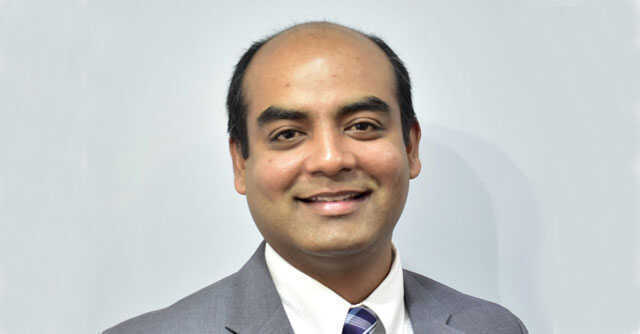
AI, data analytics can revolutionise Indian healthcare ecosystem


The healthcare system in India has witnessed a paradigm shift in ensuring quality care delivery and care management to citizens in the last decade. Technology has increasingly been leveraged for better reach and patient care. The application of digital technologies, including artificial intelligence (AI), machine learning (ML), data analytics, the internet of things (IoT), cloud computing, and robotics is increasing in each phase of the Indian healthcare system.
According to global consulting major McKinsey, the size of the global digital health market will reach $515 billion by 2024, having been at around $350 billion in 2019. India is one of the fastest adopters of emerging technologies for better care delivery and care management for its more than billion populations. The Covid-19 pandemic saw an accelerated pace in the use of these applications. The use of data and AI in Indian healthcare has the possibility to add about $25-$30 billion to India’s GDP by the year 2025.
Innovative intervention in digitising Indian healthcare is devised in four broad areas.

Disease detection and diagnostics
Machine Learning is being used to build decision-support systems for diagnostics, and for predictive systems for prognostication. Computer vision and Deep Learning models are being used to read medical scans such as X-rays, PET scans, CT, and ultrasound scans. AI-based systems are being used for early detection of tumours, using non-invasive, non-touch and non-radiation approaches to detect breast cancer and predicting cancer recurrence through a risk score.
AI-based applications now help build systems that can analyse blood through. SigTuple, for example, is using an AI platform called Manthana for automated analysis of blood smears as well as for the digitization of samples of blood, urine and semen.

One of India’s leading government hospitals has developed a tool that leverages thermal imaging and AI-based tests to help predict haemodynamic shocks in patients. Artificial Intelligence systems help in
tuberculosis diagnosis, and DR systems are also now being developed. Platforms such as OnliDoc and Lybrate use Artificial Intelligence to provide virtual assistance and remote diagnostics.
Process optimisation

ML processes are being developed to create higher efficiencies in hospital bed management and processing of insurance claims. A few online platforms that assist with helping find a doctor, storing health records, or getting medicines are using Machine Learning to improve efficiencies. Many have begun automating first-level screening of symptoms and finding doctors. Optical character-reading systems are also being used to scan prescriptions and check medications. ML is also being developed for bed management and planning, to predict rates of ‘patient churn’ or turnover of beds in order to optimize the use of hospital beds.
Infrastructure and costs
Artificial Intelligence systems could turn out to be expensive to train, test and deploy. Datasets are expensive to collect and collate, and there is no doubt that computing power and storage space is also expensive. Most healthcare organizations also lack the data infrastructure necessary to collect data needed to optimally train algorithms i.e. to test them for bias, adjust the model, and evaluate field outcomes.

The lack of digital infrastructure to build Artificial Intelligence systems is an added constraint. Cloud-based computing infrastructure is usually concentrated in servers that are outside India. As a result, several start-ups have now been set up outside India.
The lack of infrastructure technology has made it difficult to create applications based on Deep Learning techniques. This poses a challenge for developing Artificial Intelligence capacities across various languages, which would be relevant for the adoption of Artificial Intelligence in primary health across diverse rural areas. Also, there is a shortage of skilled data scientists.
Access to data

AI systems are driven by the availability of large amounts of data. In India, datasets for healthcare are fragmented, dispersed and incomplete. Patients often go to different doctors for the same diagnosis or treatment; even large hospitals do not see loyal patients. A large proportion of healthcare providers are unaccredited and informal practitioners, with a lack of data collection, recording and analysis, and differing approaches to medical care.
Digitisation practices are often poor in India, and not standardized; there is no centralized database for health records in India. Even in large hospitals, every time a patient visits, a new registration number and patient file is issued, and prescriptions are handwritten. Health workers record patient histories in notebooks, using their own annotations. The data for AI companies thus may be unrepresentative of a significant part of the population.
Efforts are on to digitize the Indian healthcare system with plans for an Integrated Health Information Program (IHIP) to create Electronic Health Records (EHRs) for all citizens. This will also allow the interoperability of existing EHRs. However, healthcare workers are often overworked, and may not be able to invest the time and effort needed.

It is the need of the hour in India to ensure the digitization of data by laying the groundwork, a revolution in adopting AI & ML will not be seen unless this is resolved. Employing AI and ML in care delivery and care management will allow healthcare professionals to gain a better understanding of patient needs in order to provide better guidance and support for maintaining good health; Indians must leverage this to the best.

Suman Katragadda
Suman Katragadda is the Founder and CEO of Heaps.ai.
